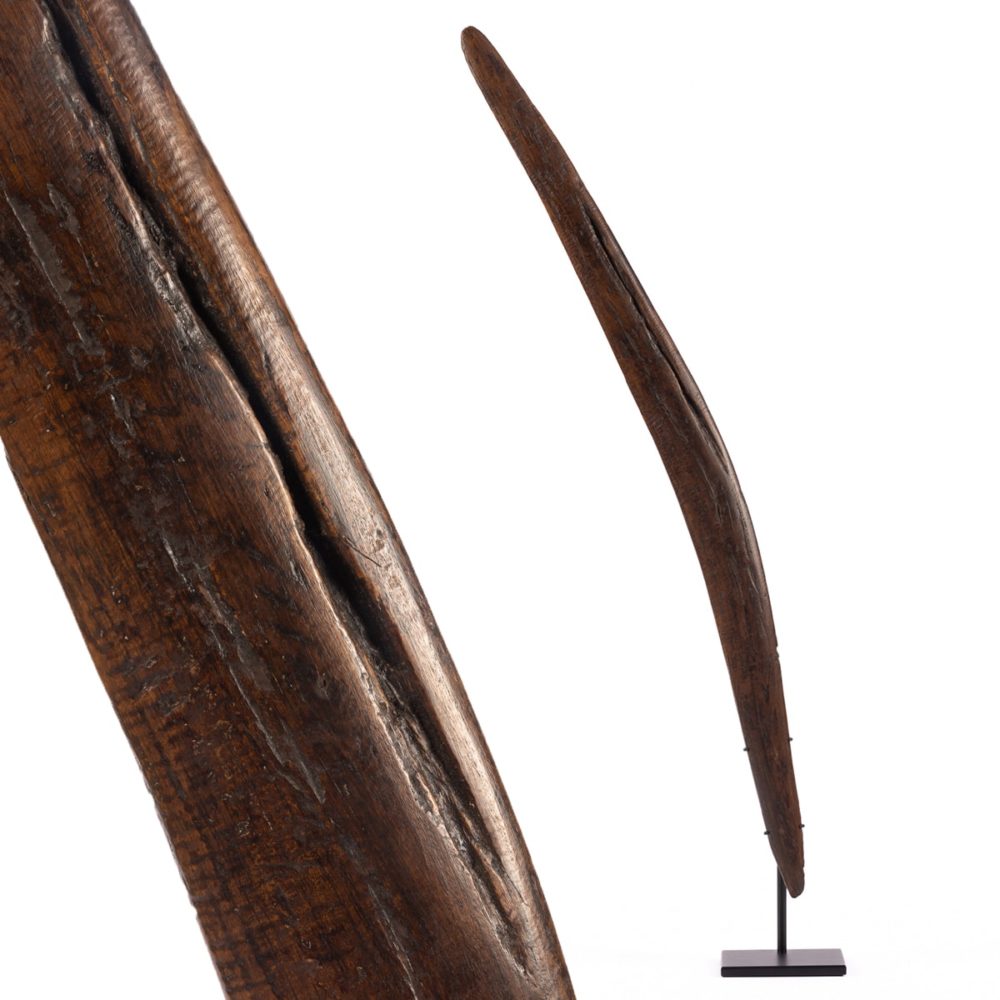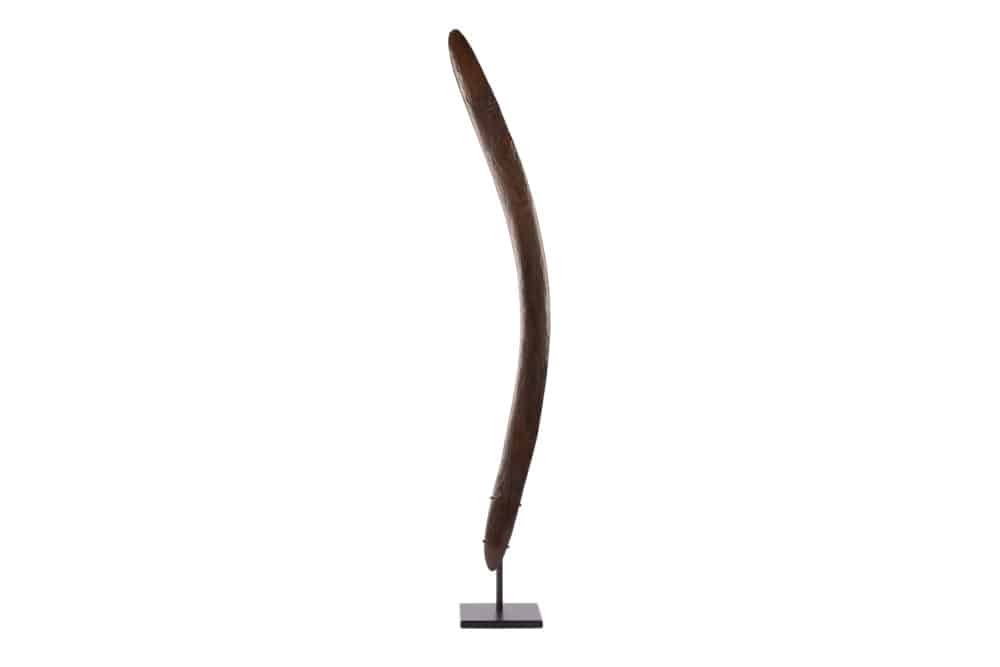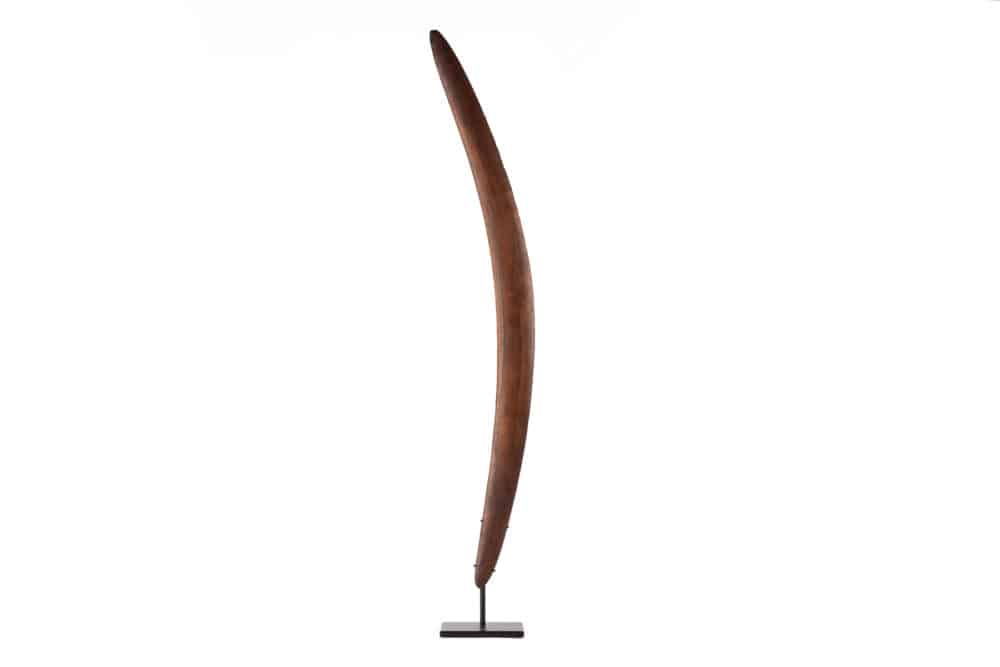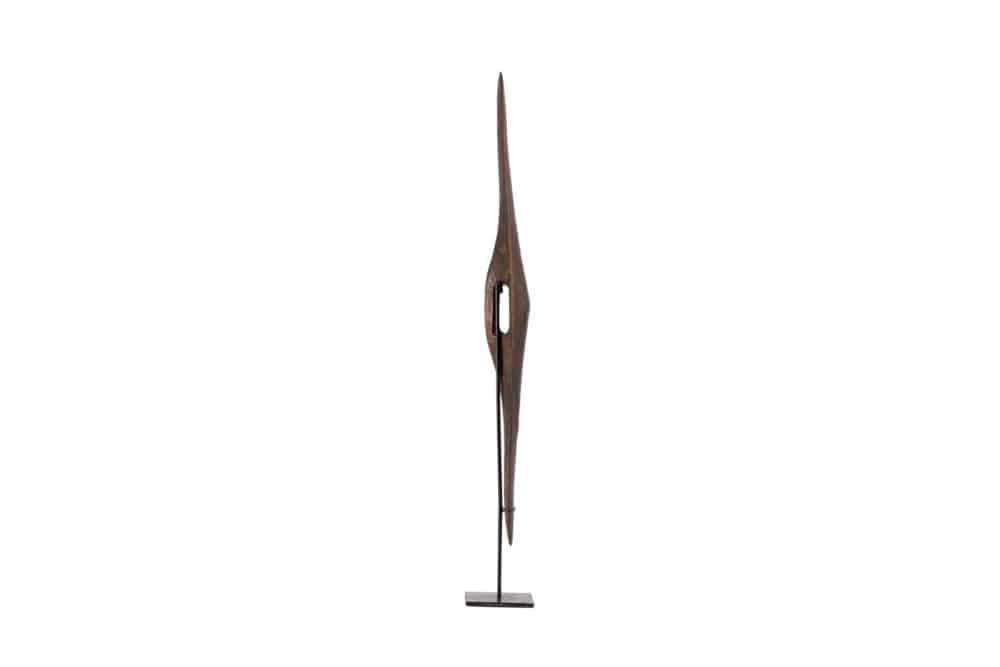Aboriginal Artefacts from Private Collections
- Makers Unknown
- 16 May—30 Sep 2023
- Download now
Michael Reid Murrurundi is proud to present Aboriginal Artefacts from Private Collections. This collection celebrates the history and use of clubs, boomerangs and shields in Aboriginal culture. The necessary tools and equipment used for hunting, fishing, and warfare, were some of the few items that Aboriginal communities carried with them from place to place. To be an object carried was to be important, to the needs of the individual and community.
Most objects were used for a multiplicity of purposes. Because many were made from raw natural materials, such as wood, generally only partial remains are found today. Far more significant however, than the rarity of finding such a wooden artefact intact, this Nulla Nulla has two major attributes rarely found in combination: these being the impact on the weapon made by early European contact and the know, highly specific provenance as to the objects place of discovery and time.
An Aboriginal club, otherwise known as a nulla-nulla, could be used for a variety of purposes such as for hunting, fishing, digging, warfare and in ceremonies.
The boomerang is recognised by many as a significant cultural symbol of Australia. The term ‘returning boomerang” is used to distinguish between ordinary hunting and warfare boomerangs and the small percentage which, when thrown, will return to its thrower. The oldest wooden boomerang artefact known, excavated from the Wyrie Swamp, South Australia in 1973, is estimated to be 9,500 years old. Boomerangs could be used as hunting or fighting weapons; for digging; as cutting knives; for making fire by friction and as percussion instruments for making music.
Shields were mainly used by Aboriginal warriors to defend themselves in dispute battles, often for territory. A shield which had not lost a battle was thought to be inherently powerful and was a prized possession. Shields were made from wood or bark and usually had carved markings or painted designs. They could also be used in ceremonies such as in corroborees.
















